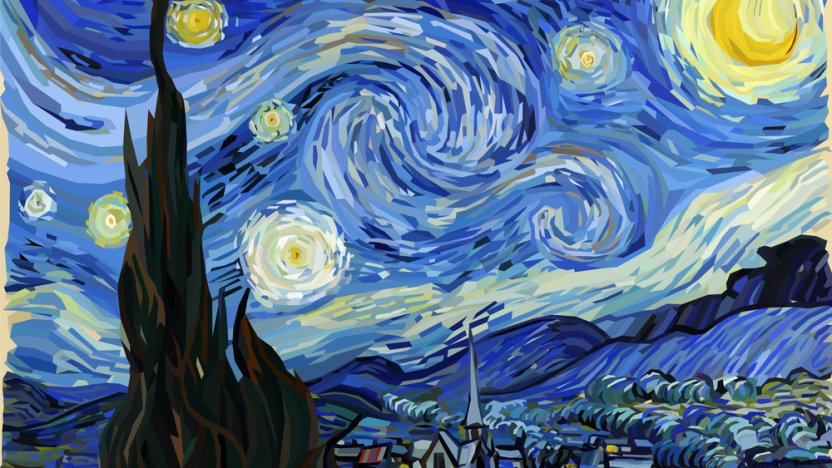A Deep Study the Most Famous Trump Artworks of Recent Years
Beginning on an Aesthetic Trip With the Lyrical Analyses of Nature in Impressionist Landscapes
In the realm of art history, the Impressionist activity attracts attention as an essential duration that transformed the means nature was portrayed on canvas. Artists such as Claude Monet, Camille Pissarro, Edgar Degas, Berthe Morisot, and Vincent Van Gogh recorded the significance of the all-natural world through their special interpretations, producing landscapes that transcend mere graph. Each brushstroke, each play of light and darkness, and each color choice in their works talks quantities about the artists' deep link to nature and their ability to equate its beauty onto the canvas. As we check out the lyrical interpretations of nature in Stylist landscapes, we are invited to submerse ourselves in a globe where fact and feeling link, offering a glimpse into the musicians' profound gratitude for the environment.
The Fascinating Brushstrokes of Claude Monet
Claude Monet's proficiency of brushstrokes transcends plain technique, imbuing his landscapes with an angelic high quality that fascinates and captivates viewers - trump art. His innovative usage of shade and light, combined with his distinctive brushwork, produces a feeling of activity and life within his paintings. Monet's prominent series of works illustrating water lilies and his famous haystacks display his capability to record the fleeting impacts of light and atmosphere

Checking Out Light and Shadow With Camille Pissarro
Personifying a comparable respect for the interaction of light and shadow, Camille Pissarro's imaginative vision unravels as an unified exploration of the environment's luminescent nuances. Pissarro, a crucial number in the Impressionist movement, masterfully caught the vibrant relationship between light and shadow in his landscapes. His proficient use of color and brushwork allowed him to communicate the refined shifts in light that define different times of day and periods.
Pissarro's paintings commonly include dappled sunlight filtering through leaves, casting complex patterns of light and shadow on the earth below. In jobs such as "Hoar Frost, the Effect of Snow, Pontoise," Pissarro skillfully depicts the crisp brightness of wintertime sunshine compared with the cool darkness that specify the snowy landscape. By welcoming both light and shadow in his structures, Pissarro invites audiences to submerse themselves in the all-natural elegance and short-term effects of light in the world around them.

Via Pissarro's works, we are advised of the transformative power of light and shadow, inviting us to pause and appreciate the fleeting minutes of beauty present in the everyday landscapes that border us.
A Harmony of Color Styles by Edgar Degas
Edgar Degas coordinates a vivid harmony of shades in his skillful art work, infusing his structures with a dynamic interplay of hues that captivate the viewer's gaze. Known primarily for his ballet professional dancers and intimate scenes of Parisian life, Degas adeptly adjusted shades to share state of mind and motion in his paintings. trump art. His use bold, contrasting shades and refined tonal variants created a sense of deepness and vibrancy within his works
Degas' shade scheme frequently contained rich blues, deep environment-friendlies, and cozy oranges, which he used with positive brushstrokes to capture the significance of his subjects. Whether portraying a ballerina mid-performance or a group of pals talking at a cafe, Degas' colors not just showed the scene however also evoked a feeling of feeling and energy.
Furthermore, Degas' trial and error with light and darkness added an additional layer of complexity to his color make-ups, improving the general atmosphere of his paints (trump art). Through his skillful adjustment of color, Degas developed an aesthetic symphony that proceeds to resonate with visitors today
Checking out Nature's Calmness With Berthe Morisot
Berthe Morisot's imaginative vision uses a serene separation from the vibrant shade symphonies of Edgar Degas, as she records the tranquility of nature in her expressive landscapes. Understood for her fragile brushwork and intimate representations of everyday life, Morisot's landscapes exude a feeling of peace and consistency.
Morisot's paintings commonly feature soft, low-key tones that communicate a sense of peace and calmness. Her jobs, such as "The Cradle" and "Summertime's Day," display her ability to record the subtle elegance of nature in such a way that is both reflective and soothing to the visitor.
Unlike some of her Stylist equivalents who focused on vibrant make-ups and vibrant colors, Morisot chose to develop mild, reflective scenes that invite the audience to stop briefly and mirror. With her masterful usage of light and darkness, Morisot creates a sense of harmony that reverberates with the audience on a deep psychological degree.
The Emotional Landscapes of Vincent Van Gogh
Vincent Van Gogh's landscapes vividly communicate a deepness of feeling with their vibrant brushwork and meaningful use of color. The Dutch post-impressionist artist is renowned for his capacity to catch intense and raw feelings in his paints, going beyond conventional depictions of nature. Van Gogh's turbulent personal life, marked go by mental health and wellness battles, significantly influenced his art, instilling his landscapes with a feeling of anxiousness, moody, or enthusiasm.
In jobs such as "Starry Evening" and "Wheatfield with Crows," Van Gogh's swirling brushstrokes and vibrant shade choices stimulate an extensive psychological response from visitors. The stormy skies and perturbed landscapes in his paints mirror his inner chaos and psychological disturbance, inviting audiences to look into the intricacies of his mind.
Van Gogh's special visual language, characterized by overstated viewpoints and strong use of color, creates landscapes that reverberate with visitors on a deeply psychological level. Via his art, Van Gogh welcomes us to see nature not just as an external fact however as a mirror of our innermost feelings and emotions.
Verdict
To conclude, the impressionist landscapes of artists such as Claude Monet, Camille Pissarro, Edgar read this post here Degas, Berthe Morisot, and Vincent Van Gogh offer a fascinating and distinct aesthetic analysis of nature. Through their use brushstrokes, color, light, and emotion, these musicians have actually created a symphony of images that evoke a feeling of peacefulness and elegance in the natural globe. Their jobs continue to motivate and bewitch visitors with their lyrical analyses of the landscapes around i was reading this us.
Each brushstroke, each play of light and shadow, and each shade selection in their jobs talks quantities about the musicians' deep link to nature and their capability to equate its charm onto the canvas. His cutting-edge usage of shade and light, combined with his distinct brushwork, develops a feeling of activity and life within his paintings. His proficient usage of shade and brushwork permitted him to communicate the refined shifts in light that define various times of day and periods.
